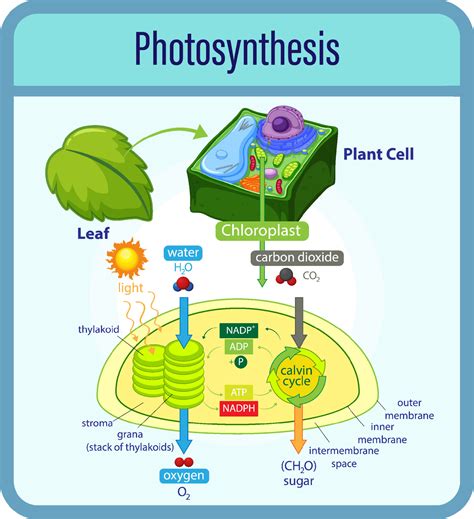Photosynthesis is the process by which plants and other organisms use sunlight to convert carbon dioxide and water into glucose and oxygen. This process is essential for life on Earth, as it provides the oxygen that we breathe and the food that we eat.

But what cellular organelle is responsible for performing photosynthesis?
The Chloroplast: The Powerhouse of Photosynthesis
The chloroplast is a small, green organelle found in plant cells. It is surrounded by a double membrane and contains a fluid-filled matrix called the stroma. The stroma contains chlorophyll, a green pigment that absorbs light energy from the sun.
The chloroplast also contains thylakoids, which are flattened, sac-like structures that are arranged in stacks called grana. The thylakoids contain chlorophyll and other light-absorbing pigments.
When sunlight strikes the chlorophyll in the thylakoids, it is converted into chemical energy. This energy is used to produce ATP and NADPH, which are two energy-carrying molecules.
ATP and NADPH are then used to convert carbon dioxide and water into glucose. This process takes place in the stroma of the chloroplast.
The Importance of Photosynthesis
Photosynthesis is essential for life on Earth because it provides the following:
- Oxygen: Photosynthesis produces oxygen, which is essential for respiration.
- Food: Photosynthesis produces glucose, which is the basic building block of food.
- Energy: Photosynthesis produces ATP and NADPH, which are energy-carrying molecules that are used to power cellular activities.
The Future of Photosynthesis
Photosynthesis is a complex and fascinating process that is essential for life on Earth. Scientists are currently working to understand how photosynthesis works and how it can be used to improve crop yields and produce renewable energy.
Key Terms
- Chloroplast: A small, green organelle found in plant cells that is responsible for performing photosynthesis.
- Thylakoids: Flattened, sac-like structures found in the chloroplast that contain chlorophyll and other light-absorbing pigments.
- Stroma: The fluid-filled matrix of the chloroplast that contains chlorophyll and other proteins.
- ATP: Adenosine triphosphate, an energy-carrying molecule that is produced during photosynthesis.
- NADPH: Nicotinamide adenine dinucleotide phosphate, an energy-carrying molecule that is produced during photosynthesis.
Additional Information
- The chloroplast is a semi-autonomous organelle, meaning that it has its own DNA and can replicate independently of the cell.
- The chloroplast was once a free-living bacterium that was engulfed by a eukaryotic cell.
- Photosynthesis is the oldest known metabolic pathway on Earth.
- The first photosynthetic organisms evolved over 3 billion years ago.
- Photosynthesis is a key factor in the carbon cycle, which helps to regulate the Earth’s climate.
Conclusion
Photosynthesis is a complex and fascinating process that is essential for life on Earth. The chloroplast is the cellular organelle that is responsible for performing photosynthesis. Scientists are currently working to understand how photosynthesis works and how it can be used to improve crop yields and produce renewable energy.
